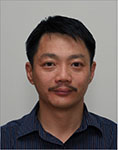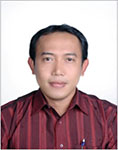Double-section, non-retrievable casing drilling technique
Keith Won A , Ming Zo Tan A and I Made Budi Utamain AWeatherford
The APPEA Journal 52(1) 261-272 https://doi.org/10.1071/AJ11019
Published: 2012
Abstract
With the continuous surging in daily rental rates of oilfield exploration rigs, Casing while Drilling technology—which provides operators with an alternative drilling solution for a reduction in drilling flat-time and increased drilling operation efficiency—has appeared to be a standard part of drilling engineers’ toolkit in the well-planning process. Significant cost savings generated by Casing while Drilling have contributed to this technique being widely deployed on top-hole string installations on exploration and appraisal wells in the southeast Asia region.
The double-section casing drilling technique has gained increasing popularity among operators in recent years; however, this technique development has been hamstrung by limited casing bit selections. An improved design casing bit has been highly anticipated in the industry to reduce this technique’s complexity of drilling process.
Finding an equilibrium between durability and drill-out capability features for a casing bit has been a major challenge for bit designers. The increasing prospect and demand for a double-section casing drilling technique, however, has yielded the development of the casing bit design to a wider portfolio, inclusive of a more robust PDC (polycrystalline diamond compact) cutter-based drillable casing bit.
The introduction of the new robust but drillable PDC cutter-based casing bit has broadened the Casing while Drilling application. The double-section casing drilling technique without the need for an additional conventional clean-out trip has become a strong contender to be part of drilling engineers’ next toolkit in delivering enhanced drilling performance and increasing operational efficiencies.
This paper will introduce the first case history of the successful planning and implementation of the double-section casing drilling technique—particularly emphasising its optimised drilling performance and ease of drill-out without the need for a specialised drill-out bit.

Keith Won began his oilfield career with Weatherford as a Drilling with Casing application engineer in 2006 after graduating from a Bachelor of Mechanical Engineering majoring in petroleum from Petronas University of Technology. During the last five years with Weatherford, Keith has been heavily involved in casing drilling projects across the Asia-Pacific region. Keith now holds the position of Asia-Pacific Region Total Depth Services team leader, heading up an established team of applications engineers primarily focused on drilling with casing and other top drive casing running applications. The team also focuses on overcoming operators’ challenges in the safe and efficient installation of casing string. Keith.Won@ap.weatherford.com |

Tan Ming Zo graduated from University of Technology, Malaysia in 1995, then began his oilfield career as an application engineer with Halliburton Security DBS before joining Weatherford’s Drilling with Casing division in 2002. Ming Zo was the global drilling with casing application engineering manager for three years, from 2008–2010. Ming Zo is now the global champion for Drilling with Casing and heads up the entire drilling with casing division based in Houston. MingZo.Tan@weatherford.com |

I Made Gde Budi Utama graduated from the Petroleum Engineering Department of Universitas Pembangunan Nasional (UPN) “Veteran” Yogyakarta in 2005 with Cum Laude title. While at university, Budi was involved in the SPE Student Chapter for three years from 2000–2003, as a department coordinator and committee chairman of a short course. Budi has also been actively involved in many activities of the local student oil and gas chapter (IATMI). Budi previously worked as a mud logger for Geoservices Indonesia (Geoprolog Intiwijaya) from August 2005 to December 2006. Budi then worked as a managed pressure drilling field engineer in Weatherford Indonesia from January–June 2006. He now works as an applications manager at Weatherford’s Drilling with Casing department, focusing on onshore planning and assisting in DwC applications as a drilling/reaming with casing engineer. IMade.BudiUtama@ap.weatherford.com |


